Xiaomi 12S Ultra design and build quality
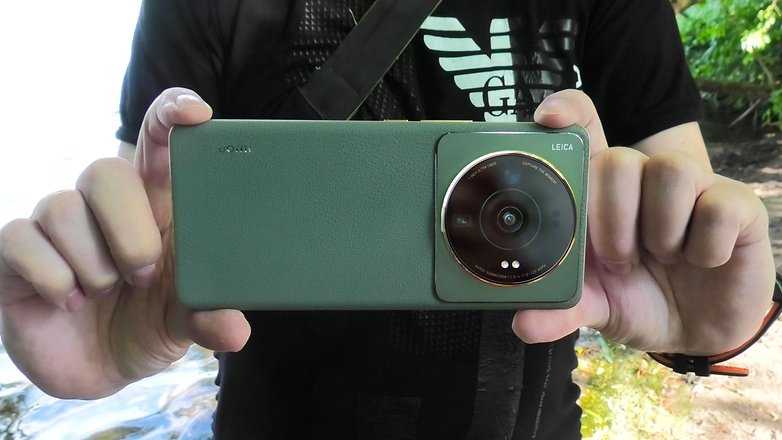
The Xiaomi 12S Ultra features the look of an analog Leica camera. / NextPit
The Xiaomi 12S Ultra does not leave you guessing when it concerns the design:
Xiaomi wanted to feature an old, compact camera at the back
— and they succeeded. The dominant circular camera unit takes up a third of the entire back and is also difficult to hide. Presumably, this is supposed to pay homage to its cooperation with Leica, whose logo is now discreetly immortalized at the back.
What I liked:
- Design are pleasant to the eyes.
- Imitation leather is nice to the touch.
- Solid build quality.
- IP68 certification.
What I disliked:
- Golden frame is tacky (this is a matter of personal preference)
- «Harman Kardon» sound could use more bass
- One speaker is always covered when held in landscape mode
- No secondary display
- 225 grams of weight is unpleasantly heavy in the pocket
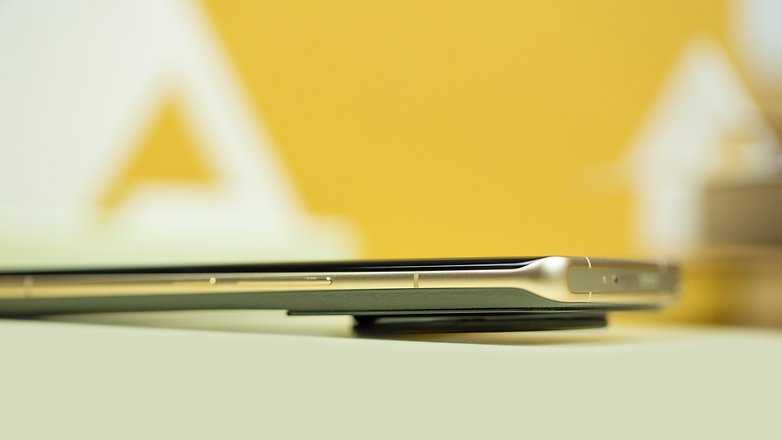
The Xiaomi 12S Ultra doesn’t wobble when lying prone on the desk thanks to a huge camera array. / NextPit
Anyone who gets to hold the Xiaomi 12S Ultra in their hand for the first time will probably be unable to avoid a big grin. This very first collaboration with Leica tips the scales at a whopping 225 grams with a size of 163.2 x 75 x 9.3 millimeters. That is probably also a record, just like the massive and circular camera array at the back. It protrudes another 4 millimeters from the back in addition to its one mm «base plate».
At least it doesn’t tilt on the desk when lying prone on the back, taking up the entire width and about a third of the height of the back. The nice posterior is also rather charming in its own right.
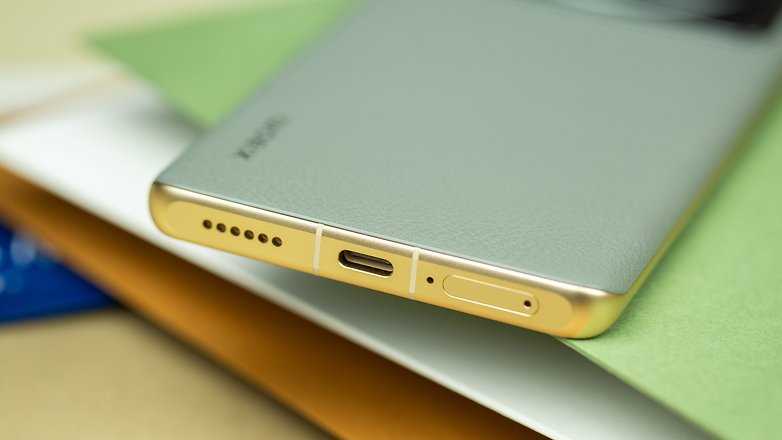
One of the two speakers is covered when held in landscape mode. / NextPit
Nevertheless, the heavyweight chassis feels extremely secure in the hand probably because of the imitation leather that comes in either green or black shades. It features very high-quality good workmanship, an aluminum frame, and good button placement on the right side that characterizes the Ultra flagship.
In front, as is so often in the case of flagships, there are rounded edges all around the display. Not everyone likes it, but I can reassure you this: I did not notice any input errors during my daily use. I only had my finger too far in the display once when taking pictures, so the shutter did not work. However, this can be adjusted in the settings.

All buttons are easily within reach. / NextPit
The stereo speakers from Harman Kardon at the top and bottom live up to their name, but could still have pumped out a bit more bass for my taste, if that is at all feasible for a smartphone. However, one of the two speakers remains covered in landscape mode when gaming, which I also consider as unfavorable.
The upper and lower sides are flat, so the Xiaomi 12S Ultra could theoretically stand on them if you do not have a tripod at hand in windless environments.
Сравнение с 13 Pro Max и Pixel 6 Pro
Но при всем при этом новый сенсор все же хороший.
Большой датчик изображения Xiaomi 12S Ultra в большинстве сценариев позволяет добиться лучшего результата, чем сенсоры iPhone 13 Pro Max и Pixel 6 Pro. Особенно заметной разница становится при ночной съёмке.
При дневной съемке получаются довольно одинаковые фото с разным балансом белого. При съемке на три разных бренда получаются довольно разные фотографии. Но с уверенностью можно сказать, что в сумме фотки лучше выходят именно на Xiaomi 12S Ultra.
Поговорим о приложении «Камера». Оно удобное и не глючит. Работает все довольно быстро. По умолчанию камера работает в двух режимах Leica: Authentic и Vibrant. Также есть четыре дополнительных фирменных фильтра от Leica, два из которых черно-белые.
В приложении есть множество режимов: профессиональный режим, портрет, 50 Мп, ночь, суперлуние, долгая выдержка, мультикамера, клонирование объектов, документы, слоу-мо, панорама, короткие ролики, влог, киноэффекты и таймлапс.
Нижнее меню режимов можно настраивать, что очень удобно. Есть и макро-режим, он, как и в iPhone, включается автоматически, задействуется ширикоугольная камера.
Дизайн, комплект, зарядка
Хорошо. Про камеры поговорили, теперь можно о телефоне.
Надо отметить, что он, во-первых, тяжелый. Но при этом достаточно симпатично смотрится экокожа зеленого цвета и матовая или золотая рамка. Отличное решение! Компания выпускает смартфон еще в черном цвете. Но он скучноватый.
По остальным элементам все так же, как на Xiaomi 12 Pro: те же кнопки, алюминиевая рамка, тот же небольшой подбородок внизу, динамики с отличным звуком.
Есть защита от воды по стандарту IP68 и Gorilla Glass Victuг спереди.
Комплект.
Увы! Комплектация без изысков: силиконовый чехол, инструкция, скрепка, кабель и адаптер питания на 67 Вт.
Зарядка.
Объём аккумулятора — 4860 мАч.
Xiaomi обещает от 0 до 100% всего за 41 минуту. Телефон заряжается ультра быстро. Есть также беспроводная зарядка 50 Вт и реверсивная 10 Вт. Беспроводная – заряжает от 0 до 100% за 52 минуты.
За контроль зарядки и безопасность работы отвечают фирменные чипы Surge P1 и Surge G1.
Remember This Phone
Most in the west won’t even know the Xiaomi 12S Ultra exists, much less remember it, but it will hold some significance for me as a phone that I feel turns a page for mobile photography. It is the first to fully utilize an image sensor found in a stellar point-and-shoot, arguably the best of that dying camera type. It also marks a partnership with a camera brand that actually looks like it visibly bears fruit in image quality. There are design principles at play here that make the phone stand out because of its camera.
Unless Xiaomi releases this phone to other markets, of which it’s made no official overtures saying it will do so, the Xiaomi 12S Ultra will be like a shadow catalyst. It will also raise questions over why Xiaomi was bold enough to do this, while the likes of Apple, Samsung, and Google didn’t. If not for the limited release, the 12S Ultra could be the best camera phone of 2022 thus far.
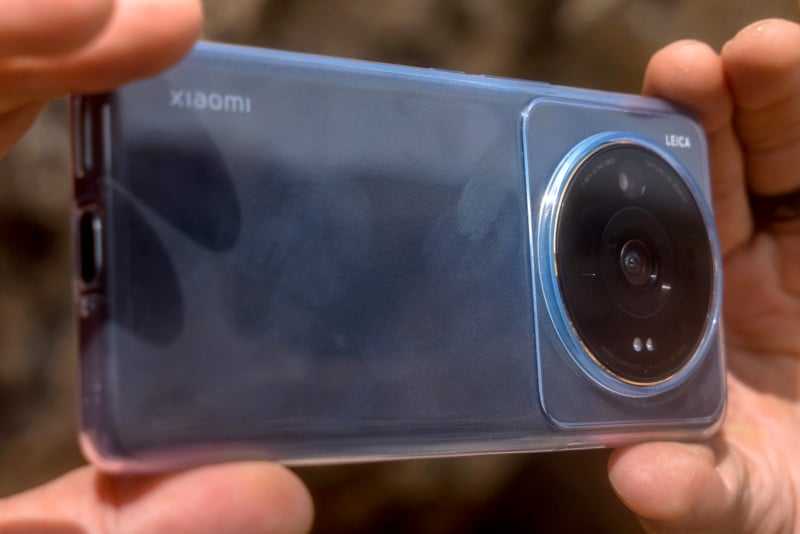
Are There Alternatives?
The only real options are those available in other markets that prove to be great shooters. The Vivo X70 Pro+ is still an excellent choice, though a successor could very well come before the year is out. If you like Xiaomi and can tolerate the eccentricities of its MIUI Android overlay, then the 12 Pro could be a good alternative. You can also look into the Sony Xperia Pro-I since it uses a similar sensor, albeit not to the full potential like the 12S Ultra does.
The newest iPhones and Pixels will certainly make things interesting, but don’t expect an image sensor of this size to cram their way into any of those phones. Samsung continues to go the incremental route, unless we’re in for a surprise with the next Galaxy S flagship.
Should You Buy It?
Not unless you live in China, given the limitations. Otherwise, hold out hope it or a camera like it goes global sooner rather than later.
Update 8/29: A previous version of this review said the Xiaomi 12S Ultra was powered by the Snapdragon 8 Gen 1, when it is actually powered by the Snapdragon 8+ Gen 1. We apologize for the error.
Image Quality
Main camera
By default, the wide camera uses pixel binning to shoot at 12.5-megapixels. The separate 50MP mode lets you shoot at full resolution, but with one big caveat: the Leica modes and filters become unavailable once you do. I’m not clear as to why, especially since the mode is available in Pro mode, but will update this review if I get clarity from Xiaomi.
Despite all that, the camera can truly capture outstanding photos. The beauty of it is that it requires less effort and intervention to make it happen, meaning you don’t have to adjust exposure quite as much, nor turn the AI Camera setting on. I found the most success leaving HDR on and splitting the action between the two Leica modes. Where Vibrant added more contrast and pop to images, Authentic slightly muted things for a more natural look. The more I shot with them, the more I came to really like both of them.
Color reproduction is also representative of what Xiaomi managed to do before. I praised color output in the 12 Pro, and found this camera never looked ridiculously saturated when shooting images which can happen with other smartphone brands.
Low-light shots benefit greatly from the combination at work, though you do have to watch the exposure slider because the AI bracketing overcompensates for what it must perceive is too dark a scene. This is also something inherent in how the 12 Pro shot, so can’t say I was surprised. It’s a minor thing in the grand scheme, as the 12S Ultra can produce night shots rivaling the best in the industry.
Pro Mode
This mode deserves prominence for the simple fact it fits so well with such a large sensor. Taking some shots in RAW and processing them in Lightroom led to really good results. Despite the size of the sensor, noise can pose a problem in low-light conditions, but not as much as it would be on a phone with a smaller sensor.
 Captured in RAW, edited in Lightroom
Captured in RAW, edited in Lightroom
Beyond the usual shutter speed, ISO, white balance, and focus adjustments, you can also adjust saturation, contrast, sharpness, and metering. You can shoot with any of the three rear lenses, and get focus peaking and exposure verification. Timed bursts are also an option for movement shots. For long exposure shots, the timers are there to keep your hands off.
As is customary for Xiaomi, it includes a glossary of all the features in Pro to help guide shooters on what they do. Definitely a good place to start to learn how to shoot in RAW with this phone.
Ultra-wide and Telephoto
There were fewer surprises for these two lenses owing to the familiar elements involved. Their image sensors aren’t as capable, but Leica’s software does apply to them in the right modes, so there is that. I still came away impressed at how shooting friends on a UTV at 5x zoom turned out: images not only had good color and clarity, but also excellent dynamic range.
 Captured with the telephoto camera
Captured with the telephoto camera
The ultra-wide wasn’t all that different, coming in handy in a variety of situations, proving to be flexible in where and what it could capture. While it was easier to stick to the wide lens for the sake of the 1-inch sensor, the two supporting cameras felt natural as alternatives. Light sources may still come out washed out, but I did find a softer tone with the 12S Ultra that mitigated some of the harshness of the 12 Pro.
 Captured with the ultra-wide camera
Captured with the ultra-wide camera
 Captured with the ultra-wide camera
Captured with the ultra-wide camera
Portrait and Special Modes
The 12S Ultra is one of the better phones I’ve used lately when it comes to portrait photos. This may be where the Leica partnership comes to light a little more, producing results that look natural and artistic all at once. Personally, I tend to be selective in how I use the portrait mode on any phone, but with this one, I just wanted to experiment and see how things would turn out.
Results were largely impressive. The 35mm black and white mode within Portrait was better than I anticipated, making monochrome shots look nice.

There were no real surprises with the specialty modes. Long Exposure is still the coolest one of them all when used at the right times, though I do wish there was an easier way to control the exposure. I could tap the shutter to stop it early as it captured the scene, but the delay in actually doing so messed up timing more than I would like. Vivo does this better, allowing you to adjust the exposure time far better under the same circumstances.
Xiaomi 12s Ultra performance and specs
(Image credit: Basil Kronfli / TechRadar)
Even if you ignore the camera, the Xiaomi 12s Ultra is still a cutting-edge flagship smartphone, featuring a new Snapdragon 8 Plus Gen 1 chipset, the same power introduced on the excellent Asus ROG Phone 6. It also gets either 8GB or 12GB RAM, and 128GB, 256GB or 512GB storage.
With superior heat management than the Mi 11 Ultra, the 12s Ultra is gaming-ready and handles titles like Genshin Impact and Tower of Fantasy very well. The 12s Ultra has a 4860mAh battery and 67W fast charging. You can get flagships with higher-capacity and faster-charging batteries, but Xiaomi’s included 50W wireless charging is quicker than most of the competition, making the package competitive even if it isn’t class-leading.
(Image credit: Basil Kronfli / TechRadar)
The Chinese version of the Xiaomi 12s Ultra might seem inaccessible to Westerners upon firing it up – there are loads of Chinese apps, and there’s no Play Store, despite the fact the phone runs with Android 12.
Once you install Google Play Services for AR, you can quickly and easily side-load all the Google apps you need, from Chrome to YouTube, and Maps to the Play Store. We even added a credit card to Google Wallet and it worked well.
There are some oddities when using a non-native Western phone, mainly around permissions. Setting up WhatsApp requires manually setting permissions to be able to receive notifications and see contacts’ names in your message list, for example. The only feature we couldn’t get to work during our time with it, despite our best efforts, was Google’s Nearby Share.
If you want to brave importing the Xiaomi 12s Ultra, we suggest you know your way around an Android phone. You’ll need to tinker with the phone to make everything work well. Even then, it won’t be polished to the point of perfection – some push notifications may come through with a delay, for example. Still, if you really need that huge 1-inch camera sensor in your life and can’t wait for a Western phone to ship with it, importing the 12s Ultra is the only way to go.
Вам вообще нужен телефон Snapdragon 8 Gen 1?
Для подавляющего большинства людей новый флагманский процессор лишь незначительно улучшит работу смартфона. Если вы обычный пользователь, который в основном использует свой телефон для просмотра сайтов, просмотра социальных сетей и иногда игр, семейство Snapdragon 8 Gen 1 может оказаться излишним для большинства ваших задач.
Чипсет среднего класса, такой как Snapdragon 778G, может лучше подходить для более простых повседневных задач — например, такие смартфоны, как Xiaomi 11 Lite 5G NE, обеспечивают отличную универсальность, которая, возможно, конкурирует с самыми дорогими флагманами.
Snapdragon 8 Gen 1
Конечно, если вы продвинутый пользователь, вы, скорее всего, рассматриваете телефон Snapdragon 8 Gen 1, потому что это новейшее и самое мощное семейство чипов, которое можно найти в новейших флагманах. Смартфоны, содержащие чипсеты Snapdragon 8 Gen 1, как правило, имеют лучшие экраны, лучшие камеры и самые высокие настраиваемые характеристики среди всех телефонов Android. Поэтому те, кому нужно работать в режиме многозадачности, играть в продвинутые игры или просто получать максимально мощный опыт, должны иметь это в виду.
Также стоит отметить, что в середине года Qualcomm выпустила слегка обновленный Snapdragon 8 Plus Gen 1. Это обеспечивает заявленное повышение эффективности на 30% и улучшение тактовой частоты процессора и графического процессора на 10%.
Про телевик и примеры
И последний сенсор – телевик:
- Это телефото камера с 5-ти кратным оптическим зумом;
- Разрешение — 48 Мп;
- Диаметр — 120 мм;
- Светосила — 4.1;
- Фазовый автофокус — PDAF.
- Модуль находится снизу, а вспышка – справа;
- Ещё есть сенсор ToF для замера глубины.
Телевик тоже порадовал качеством фотографий, как и остальные камеры.
Днем получаются совершенно прекрасные снимки. Фокусное расстояние здесь оптимальное, 5-ти кратное увеличение – то, что надо.
Неплохо выходят и вечерние снимки, даже в движении, несмотря на маленькое значение диафрагмы. Я бы сказал, что на данный момент этот телемодуль лучше на рынке по результату.
Smartphones with the processor Qualcomm SM8475 Snapdragon 8+ Gen 1:
Asus ROG Phone 6Asus ROG Phone 6 ProAsus Zenfone 9Honor 80 GTHonor 80 ProHonor 80 Pro FlatHonor 90 ProHonor Magic Vs1Honor Magic Vs1 UltimateHonor Magic Vs2Huawei Mate 50Huawei Mate 50 ProHuawei Mate 50 RS Porsche DesignLenovo Legion Y70Motorola Edge 30 UltraMotorola Razr 2022Motorola Razr 40 UltraMotorola ThinkPhoneMotorola X30 ProNothing Phone (2)OnePlus 10TOnePlus 11R 5GOnePlus Ace 2OnePlus Ace ProOppo Find N2Oppo Reno10 Pro+Oppo Reno9 Pro+Realme GT 2 Explorer MasterRealme GT Neo 5Realme GT Neo 5 240WRealme GT3Samsung Galaxy Z Flip4Samsung Galaxy Z Fold4Vivo iQOO 10Vivo iQOO 10 ProVivo iQOO Neo7 ProVivo iQOO Neo7 RacingVivo iQOO Neo8Vivo X FlipVivo X Fold+Xiaomi 12SXiaomi 12S ProXiaomi 12S UltraXiaomi 12T ProXiaomi Mix Fold 2Xiaomi Poco F5 ProXiaomi Redmi K50 UltraXiaomi Redmi K60ZTE nubia Red Magic 7S ProZTE nubia Z40S Pro
Verdict
Beyond the outlandish design, the Xiaomi 12S Ultra is a pretty standard effort in the ‘ultra flagship’ category.
The big display is super-specced and looks great, there’s top performance thanks to the Snapdragon 8+ Gen 1, and the combination of that chip plus the phone’s sheer size means it delivers on battery life too.
For many the only thing that really matters here is the camera, and the 12S Ultra certainly offers a unique experience. The main camera is exceptional in almost any lighting, and the large sensor delivers a natural bokeh effect no rival phone can match. Photos feel more than ever like they were shot on a larger, dedicated camera, but in turn that does rob the phone of a little of the it-just-works factor you’re used to with a smartphone.
Beyond the camera, there’s probably not enough the 12S Ultra does that’s unique to justify the hassle of importing a unit from China for most people, especially with capable alternatives from Samsung and Vivo more widely available. But if you’re willing to put a bit of work in, the 12S Ultra is hard to fault when taken on its own terms.
Автономность
Ёмкость аккумуляторной батареи у Xiaomi 12S Ultra по сравнению с предшественником меньше на 140 мАч, поэтому она составляет — 4860 мАч.
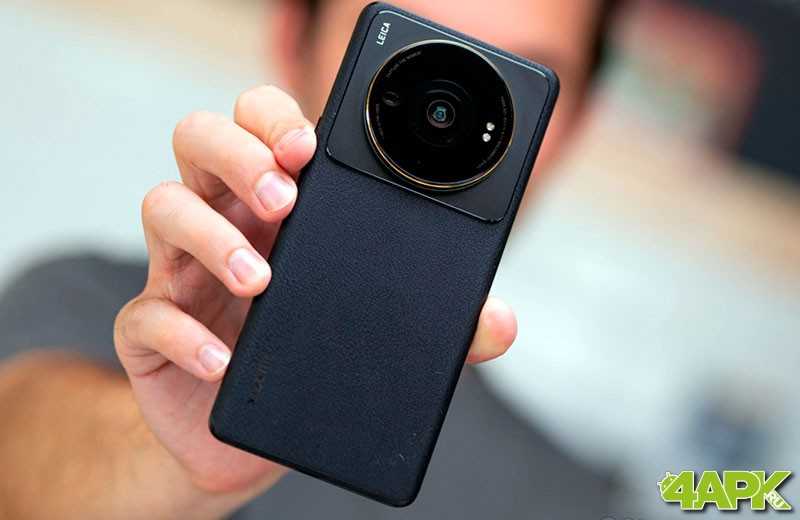
С учётом огромного дисплея и требовательного процессора время автономной работы удивляет. Одной зарядки смартфона может хватить на 14,5 часов веб-сёрфинга или 16 часов просмотра видео при разрешении 1440p.
В комплект входит адаптер на 67 Вт, который за 30 минут заряжает 75% энергии.
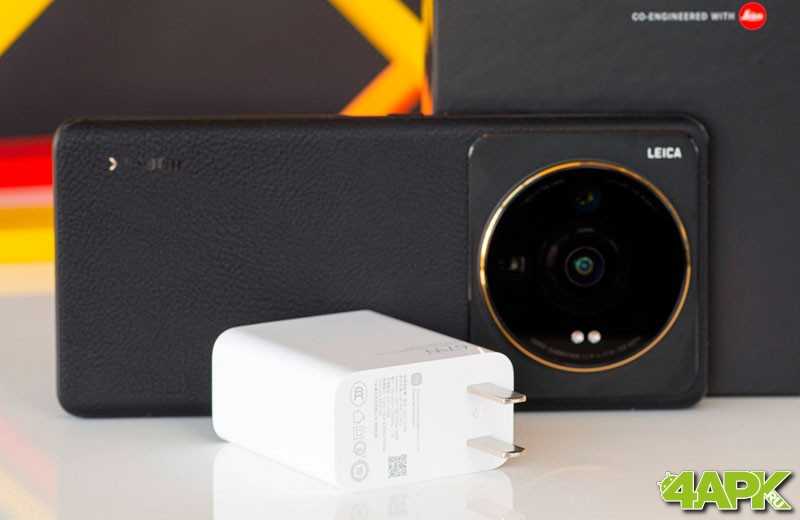
Процесс зарядки 0 до 100% занимает 50 минут, что неплохой результат. Конечно, некоторые современные флагманские девайсы вроде iQOO 9 Pro и Xiаomi 12 Pro заряжаются всего за 20 минут. Но, это больше исключение, так как полная зарядка Gаlaxy S22 Ultra занимает час, а iPhоne 13 Pro Max – почти 2 часа.
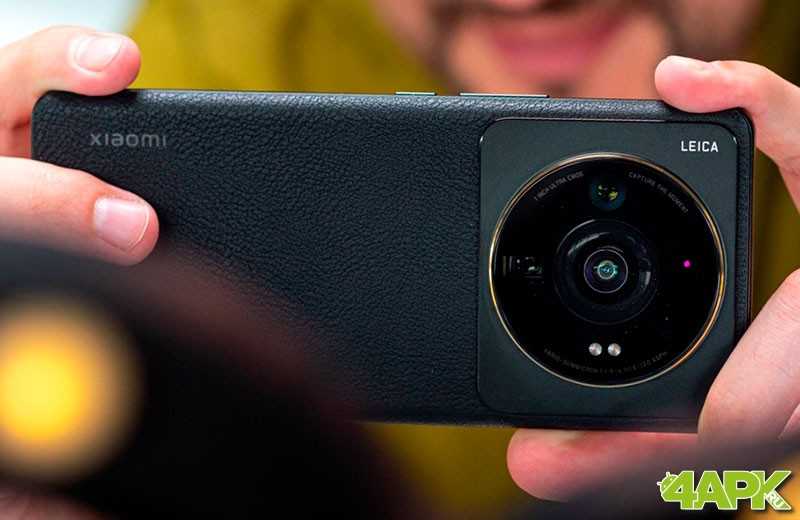
В 12S Ultra есть поддержка беспроводной зарядки, в том числе и обратной. При использовании док-станции от Xiаomi можно рассчитывать на мощность 50 Вт, когда обратная зарядка ограничена 10 Вт.
Specs & performance
- Powerful Snapdragon 8+ Gen 1
- Up to 12GB RAM and 512GB storage
- No expandable microSD storage
The 12S Ultra was one of the first phones to be announced using the Snapdragon 8+ Gen 1, a mid-year refresh of Qualcomm’s flagship chip that offers improved performance and power-efficiency.
With that in mind, it’s no surprise to find that the phone is fast. I’ve struggled to make it, well, struggle, and it handles basically any app or multi-tasking scenario with ease.
It’s a benchmark beast too – and in fact it’s registered the highest Geekbench 5 CPU score we’ve seen from any 8+ Gen 1 phone we’ve tested, even beating gaming phones like the Asus ROG Phone 6 Pro. It even picked up high marks in the GFXBench graphical tests, despite driving a challenging WQHD+ resolution.
It’s worth flagging that I’ve been testing a model with 12GB of RAM, but it’s also available with 8GB, which may run fractionally slower. Storage is either 256GB or 512GB, and it’s not expandable, so what you get is what you get.
Naturally networking is solid too. 5G is supported of course, though just sub-6GHz, no mmWave. NFC, Bluetooth 5.2, and Wi-Fi 6E round out the connectivity, while biometrics come in the form of an in-display fingerprint scanner or simple face unlock from the selfie camera.
Топовой камере топовый процессор
В качестве аппаратной платформы используется флагманский 4-нанометровый процессор Snapdragon 8+ Gen 1. Чип мощный, и Xiaomi 12S Ultra испытывает проблемы с охлаждением. Так, в стресс-тесте 3DMark Wild Life производительность снижается до 54% от максимального значения — один из худших результатов среди всех смартфонов. При этом в тесте на троттлинг аппарат демонстрирует относительно стандартные показатели, сбрасывая производительность до среднего значения 81%. Под нагрузкой после 48 минут смартфон выдал предупреждение о перегреве, но часовой тест он всё же завершил.
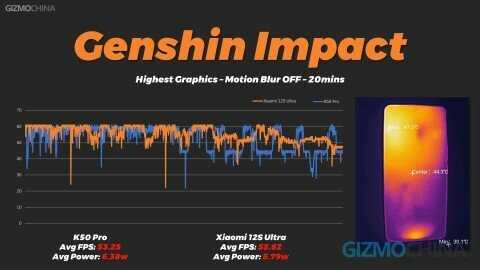
Зато в Genshin Impact с максимальными настройками графики Xiaomi 12S Ultra показал себя отлично, демонстрируя почти стабильные 60 fps с кратковременными падениями до 55 и 50 fps, что никак не сказывается на игровом процессе.
Анонс Red Magic 8S Pro и 8S Pro+: первые со Snapdragon 8 Gen 2 LV
05 июля 2023, 11:58
ZTE провела презентацию Red Magic 8S Pro и 8S Pro+ – игрофонов, удостоившихся чести первыми в мире получить новый топ-чип Qualcomm под странным именем Snapdragon 8 Gen 2 Leading Version. С его помощью новички набирают 1 713 658 баллов в AnTuTu, тем самым становясь самыми производительными смартфонами из существующих и смещая с этой позиции iQOO 11S, набирающего 1 665 452 баллов.
При этом по своей сути Red Magic 8S Pro и 8S Pro+ являются лёгкой модификацией оригинальных Red Magic 8 Pro / 8 Pro+: у них те же камеры, экраны с невидимой фронталкой, аккумуляторы и зарядки, а отличия, помимо чипсета, кроются в увеличении оперативки до 24 ГБ и новой оболочке RedMagic OS 8.0 вместо 6.0 (да, 7.0 просто перескочили). И чтобы девайсы нельзя было спутать визуально, ZTE переработала крышку, стекло которой теперь имеет текстуру фрезерованного металла, напоминающую CD-диск.А ещё теперь все без исключения модели имеют видимую турбину охлаждения с RGB-подсветкой. В наличии стереодинамики, парные линейные вибромоторы, NFC и 3.5-мм аудиоразъём.
Red Magic 8S Pro будет доступен в конфигурациях 8/128, 8/256, 12/256 и 12/512 ГБ, а у Red Magic 8S Pro+ наборы солиднее: 16/256, 16/512, 16/1024 и 24/1024 ГБ. Ценники стартуют с 3999 юаней, а продажи в Китае начнутся 11 июля. Все подробности приведены в таблице ниже.
| Технические характеристики | ||||
|---|---|---|---|---|
| Red Magic 8S Pro | Red Magic 8S Pro+ | |||
| Сеть | 2G, 3G, 4G, 5G | |||
| Прошивка | RedMagic OS 8.0 на Android 13 | |||
| Экран | 6,8″, 20:9, 2480 x 1116 точек, 120 Гц, тач до 960 Гц, 10 бит, DCI-P3, 1300 нит, ШИМ 1440 Гц, DC Dimming, OLED (BOE) | |||
| Чипсет | Qualcomm Snapdragon 8 Gen 2 Leading Version, 4 нмCPU: 8 ядер, Cortex-X3 до 3,36 ГГц + 2 х Cortex-A715 до 2,8 ГГц + 2 х Cortex-A710 до 2,8 ГГц + 3 х Cortex-A510 до 2 ГГцGPU: Adreno 740, до 719 МГц | |||
| ОЗУ | 8 ГБLPDDR5X | 12 ГБLPDDR5X | 16 ГБLPDDR5X | 24 ГБLPDDR5X |
| ПЗУ | 128 ГБ256 ГБUFS 4.0 | 256 ГБ512 ГБUFS 4.0 | 256 ГБ512 ГБ1 ТБUFS 4.0 | 1 ТБUFS 4.0 |
| SIM и карта памяти | Две nanoSIM-карты | |||
| Камера | Тройная, AI, HDR, Neo VisionОсновная: 50 Мп, Samsung GN5, 1/1,57″Широкоугольная: 8 МпМакро: 2 Мп, Gekko Micro GC02M1 | |||
| Селфи | Под экраном, 16 Мп, OmniVision OV16A1Q | |||
| Батарея | 6000 мАч | 5000 мАч | ||
| Зарядка | USB-C, 80 Вт(USB 3.2 Gen 1) | USB-C, 165 Вт(USB 3.2 Gen 1) | ||
| Беспроводные интерфейсы | Wi-Fi 802.11 a/b/g/n/ac/ax/be, 2,4/5 ГГц, поддержка Wi-Fi 7Bluetooth 5.3GPS, A-GPS, Galileo, ГЛОНАСС, Beidou | |||
| NFC | Есть | |||
| Биометрия | Сканер отпечатка пальца в экранеРаспознавание лица | |||
| Звук | Стереодинамики 1216, DTS:X Ultra, аудиоразъём 3,5 мм, 3 микрофона, LDAC | |||
| Водозащита | Не заявлена | |||
| Размеры и вес | 163,98 x 76,35 x 8,9 мм228 г | 163,98 x 76,35 x 8,9 мм230 г | ||
| Цена | 3999 юаней4399 юаней(50 470 рублей55 520 рублей) | Классические:4799 юаней5499 юаней(60 570 рублей69 400 рублей)»Прозрачный»:4999 юаней5699 юаней(63 090 рублей71 920 рублей) | Классические:5499 юаней5799 юаней(69 400 рублей73 070 рублей)»Прозрачный»:5699 юаней5999 юаней6999 юаней(71 810 рублей75 590 рублей88 190 рублей) | «Прозрачный»:7499 юаней(94 640 рублей) |
Владимир Ковалёв. Mobiltelefon
По материалам ZTE
Verdict
The Xiaomi 12s Ultra is a landmark smartphone. Not only does it feature the very best camera we’ve ever used on a mobile, it also combines it with a compelling package. The design is novel and premium, the phone’s screen is a quality display, and its battery credentials or performance don’t drop the ball.
For photography enthusiasts who generally use Android phones, it’s a crying shame the 12s Ultra hasn’t made it outside China. The phone would have put a powerful 23mm 1-inch camera in their pockets, and resulted in some beautiful snaps.
If you consider yourself an Android geek, then it might be worth importing Xiaomi’s best-in-class camera phone. You can get it to work in the UK or US, you just need to be comfortable with sideloading apps and manually managing permissions.
More compelling is the fact the Xiaomi 12s Ultra actually undercuts most Western phones in its class, despite it being the best camera phone we’ve ever tested. Starting from 5,999 Yuan (roughly $890 / £735) for the 8GB RAM / 256GB version, if you picked one up for that price, you’d be getting incredible camera phone value. Despite a degree of importability, though, for most, the 12s Ultra is a taste of the future rather than a viable option right now.
We can only hope its 1-inch, Sony IMX 989 sensor makes its way into other phones that do launch globally, and that Leica’s contribution to this superphone is as meaningful across Xiaomi’s upcoming range. If it is, and Xiaomi continues to push smartphone photography as hard as it has in the 12s Ultra, then it will be the camera phone maker to beat around the world – not just in China.
Read more
Best Xiaomi phoneBest camera phonesBest rugged phonesBest budget phones
Qualcomm Snapdragon 8 Plus Gen 1 SM8475 Specification
| Launch | may 2022 |
| Status | Available |
| Series | Snapdragon 8 Gen series |
| Class | Flagship processor |
| Model Name | SM8475 |
| Chip Name | Qualcomm Snapdragon 8 Gen 1 |
CPU
| Architecture | 1x 3.2 GHz – Cortex-X23x 2.5 GHz – Cortex-A7104x 1.8 GHz – Cortex-A510 |
| Process | 4nm |
| 64 Bit | 64 Bit support |
| Cores | octa- core (8) |
| Instruction Set | ARM9-A |
| Max Frequency | 3200 MHz |
MULTIMEDIA (ISP)
| Neural processor (NPU) | Hexagon |
| Storage type | UFS 3.1 |
| Max display resolution | 3840 x 2160 |
| Max Refresh Rate | 144Hz |
| Max camera resolution | 1x 200MP |
| Slow Motion Video Capture | 720p @ 960 FPS |
| Video capture | 8K at 30FPS, 4K at 120FPS |
| Video playback | 8K at 30FPS, 4K at 120FPS |
| Video Capture Formats | HDR10, HDR10+, HLG |
| Video codecs | H.264, H.265, VP8, VP9 |
CONNECTIVITY
| Modem | X65 |
| 4G | LTE Cat. 24 |
| Cellular Technology | 5G mmWave and sub-6 GHz, FDD, 5G NR, Dynamic Spectrum Sharing (DSS), SA (standalone), TDD, NSA (non-standalone), sub-6 GHz, HSPA, WCDMA, LTE including CBRS support, TD-SCDMA, CDMA 1x, EV-DO, GSM/EDGE |
| 5G support | yes |
| PeakDownload speed | 10 Gbps |
| Wi-Fi/Bluetooth System | Qualcomm FastConnect 6900 |
| Wi-Fi | 802.11ax, Wi-Fi 6E, 802.11ac, 802.11a/b/g/n |
| Wi-Fi peak speed | 3.6 Gbps |
| Wi-Fi Spectral Bands | 2.4 GHz, 5 GHz, 6 GHz |
| Wi-Fi Features | 4-stream Dual-band simultaneous (DBS), OFDMA (Uplink and Downlink), MU-MIMO (Uplink and Downlink) |
| Bluetooth | 5.3 |
| NFC | Supported |
| Navigation | GPS, GLONASS, Beidou, Galileo, QZSS |
| USB | USB 3.1, USB-C |
Battery & charging
- Almost two days of battery life
- Fast 67W wired charging
- Wireless charging too
The other benefit to Xiaomi adopting the 8+ Gen 1 chip is that it brings with it big boosts to power efficiency.
That has an obvious impact on battery life here, which is truly impressive – albeit helped by the large 4860mAh cell inside the phone. Whatever the cause, the end result is a phone that I’ve found can just about last two full days of use on the trot.
It sort of scrapes to the end of the second day, so I’m not sure I’d want to be reliant on that use case – especially a few months or years into the phone’s life – but it’s a great starting point for the battery to be at, and better than the vast majority of rival flagship phones, especially as it is powering a 120Hz, high resolution display.
I should note that, funnily enough, that power efficiency isn’t seen in the result of the battery benchmark test I ran for the phone, which actually came in fractionally below last year’s Xiaomi Mi 11 Ultra and worse than some other recent rivals. I’ve certainly found the 12S Ultra better in real-world usage though, so I’d put more stock in that than in the benchmark.
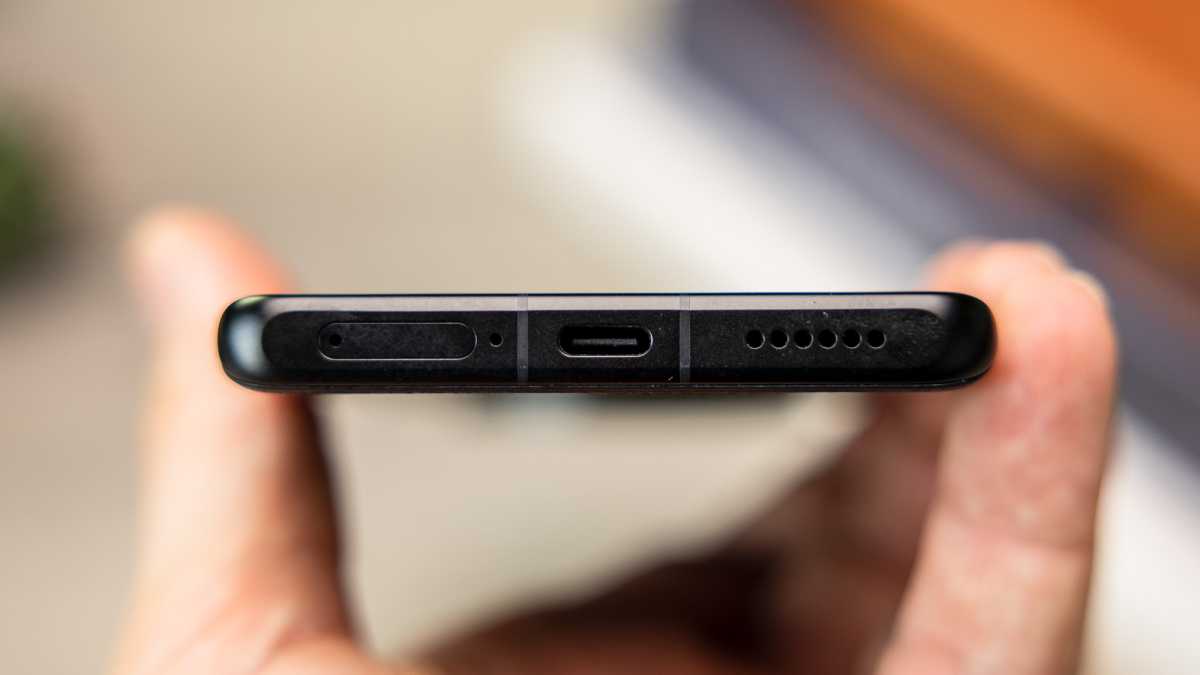
Dominik Tomaszewski / Foundry
Charging is fast, though not the fastest, at 67W. In my testing that was enough to top up half the battery – so basically a full day’s use – in just 15 minutes, with 88% returning in half an hour. Sure, some phones out there now do a full charge in less than half an hour, but the speeds here will be fast enough for most.
Qi wireless charging is supported too. Technically this will charge at up to 50W speeds, but for that you need an official Xiaomi wireless charger, sold separately. Most people are likely to hit much slower speeds on standard wireless chargers.
Дизайн
- Xiaomi 12S Ультра: 163,17 х 74,92 х 9,06 мм, 225 г
- Xiaomi 12S Pro: 163,60 х 74,60 х 8,16 мм
- Xiaomi 12S: 152,70 х 69,90 х 8,16 мм
- Xiaomi 12 Pro: 163,60 х 74,60 х 8,16 мм, 205 г
- Xiaomi 12: 152,70 х 69,90 х 8,16 мм, 180 г
- Xiaomi 12X: 152,70 х 69,90 х 8,16 мм, 176 г
Серии Xiaomi 12 и 12S выглядят практически одинаково с точки зрения дизайна, за исключением Xiaomi 12S Ultra, который выглядит совершенно иначе. Все пять моделей имеют алюминиевую раму с красивыми плавными изгибами, и все они поставляются с одинаковым корпусом камеры в верхнем левом углу — так что независимо от того, выбираете ли вы устройства Xiaomi 12 или Xiaomi 12S, внешний вид одинаков — за исключением Xiaomi 12S. Ультра.
Xiaomi 12S Ultra имеет кожаную заднюю панель с ярко выраженным блоком камеры, который расположен в центре телефона вверху, доминируя в дизайне с массивным центральным объективом, но с другими объективами, встроенными в дизайн и покрытыми защитным стеклом. . Он окружен 23-каратным золотым ободком. Он имеет класс водонепроницаемости IP68.
На других устройствах корпус камеры имеет прямоугольную форму и состоит из большой линзы вверху, а также двух меньших линз и вспышки, каждая из которых находится в отдельной секции, что создает довольно приятный дизайн. Вы заметите, что модели Xiaomi 12S имеют брендинг Leica, а более старые модели Xiaomi 12 — нет.
На передней панели в верхней части каждого из дисплеев находится централизованная камера с дырочками, и все модели предлагают датчик отпечатков пальцев под дисплеем.
Реальный вывод о дизайне заключается в том, что Xiaomi 12, 12X и Xiaomi 12S имеют одинаковый размер, а 12 Pro больше и тяжелее, что также относится к Xiaomi 12S Pro и Xiaomi 12S Ultra. Все выглядят одинаково, за исключением 12S Ultra, который отличается гораздо более премиальным дизайном.
Design and Build
The use of a Type-1 sensor complements the DSLR styling for the rear camera array. Circular arrays are hardly new, but this one just looks serious out of the box. The leather back panel only adds to the look, almost like the phone is an ode to the retro look of DSLRs from the 1960s or 70s.
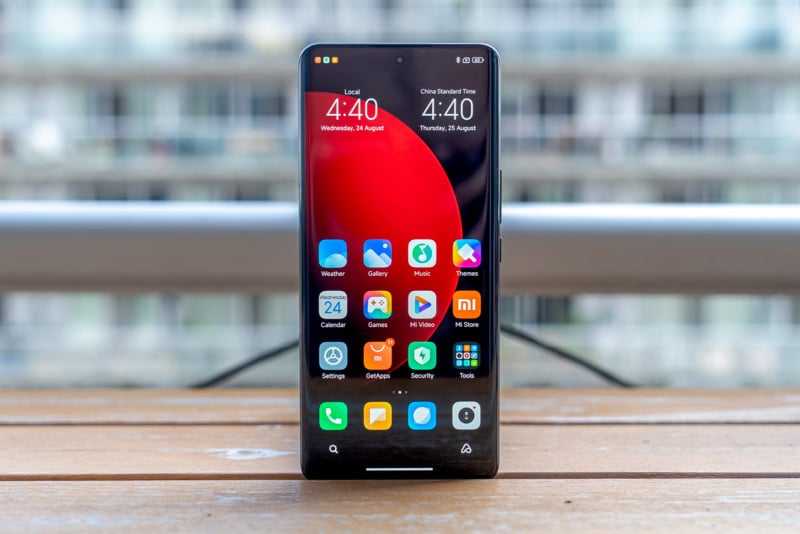
It is, in many ways, a good-looking phone because of the back — not that the 6.73-inch AMOLED on the front isn’t a nice complement. It’s actually the same display Xiaomi used in the 12 Pro. The more I held and used the phone, the more I lamented Xiaomi hoarding it for the Chinese market. Thankfully, Xiaomi does include a thin silicone case in the box to protect the back, and slightly reduce the bump from the camera module. More often than not, I would set the phone face down out of caution for the camera, though tough glass does offer the array decent protection.
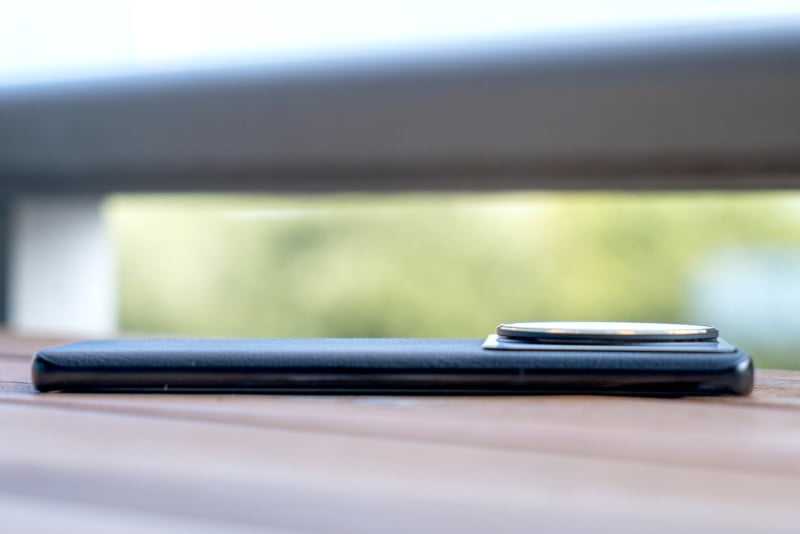
The 12S Ultra does come in a few variants, depending on whether you get 8GB or 12GB of RAM, along with 256GB or 512GB of storage. Not surprisingly, this is just the latest phone to use the Snapdragon 8+ Gen 1 processor. Needless to say, it supports Chinese bands, so using this in North America will mostly limit you to 4G LTE, as 5G compatibility is limited because of that. It does support wireless charging and sports pretty good battery life, based on my testing. Still, I can’t say for sure, as my primary focus was to test out the camera, so don’t know how well it would hold up as a daily driver with all other apps on board.
Экран

Ещё мне непонятно, что красивого в экране-водопаде: затемняющиеся края изображения? Или искажения объектов на фотографии или видео? Почему люди это оправдывают?
Экран-водопад — зло. Ты берёшь в руки смартфон, и начинаются фантомные нажатия, или просто страница не перелистывается, потому что экрана коснулась кожа, которая закрывает мышцу, приводящую большой палец. Или постоянные пропуски нажатия кнопки backspace — в постоянном повседневном использовании дико бесит, что невозможно нормально исправить опечатки.
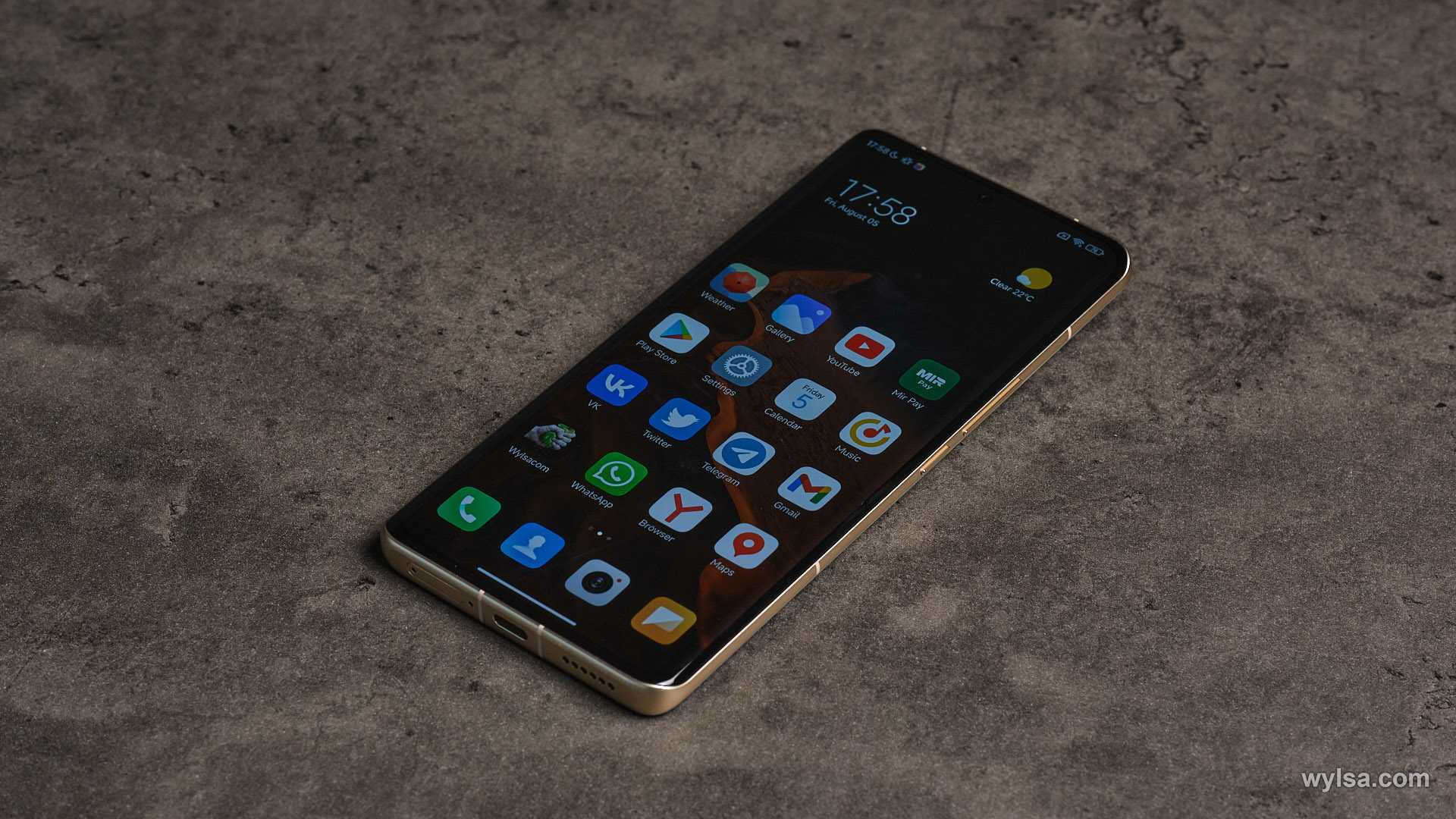
Этой проблеме уже не первый год, в прошлом году я то же самое писал о Xiaomi Mi 11 Ultra:
Обзоры
Выходные с Xiaomi Mi 11 Ultra
Но прогресс с экраном всё-таки есть. Например, он гаснет, пока ты говоришь по телефону! Вот уж чем меня этот Xiaomi действительно поразил.
Кажется, что яркости экрана должно хватить с запасом. По крайней мере, по спецификациям заявлена пиковая яркость 1500 нит. Но на ярком солнце что-то происходит и смартфон недотягивает. При этом достаёшь айфон, на время ставший запасным, и понимаешь, что вот тут с яркостью окей. Правда, через пять минут айфон начинает закипать и сбрасывает яркость практически в ноль.
Пользователю на выбор предоставляно два разрешения экрана: 2400 × 1080 и 3200 × 1440 точек. Либо я не зрячий, либо разницы действительно нет. Поэтому я выбрал меньшее разрешение.
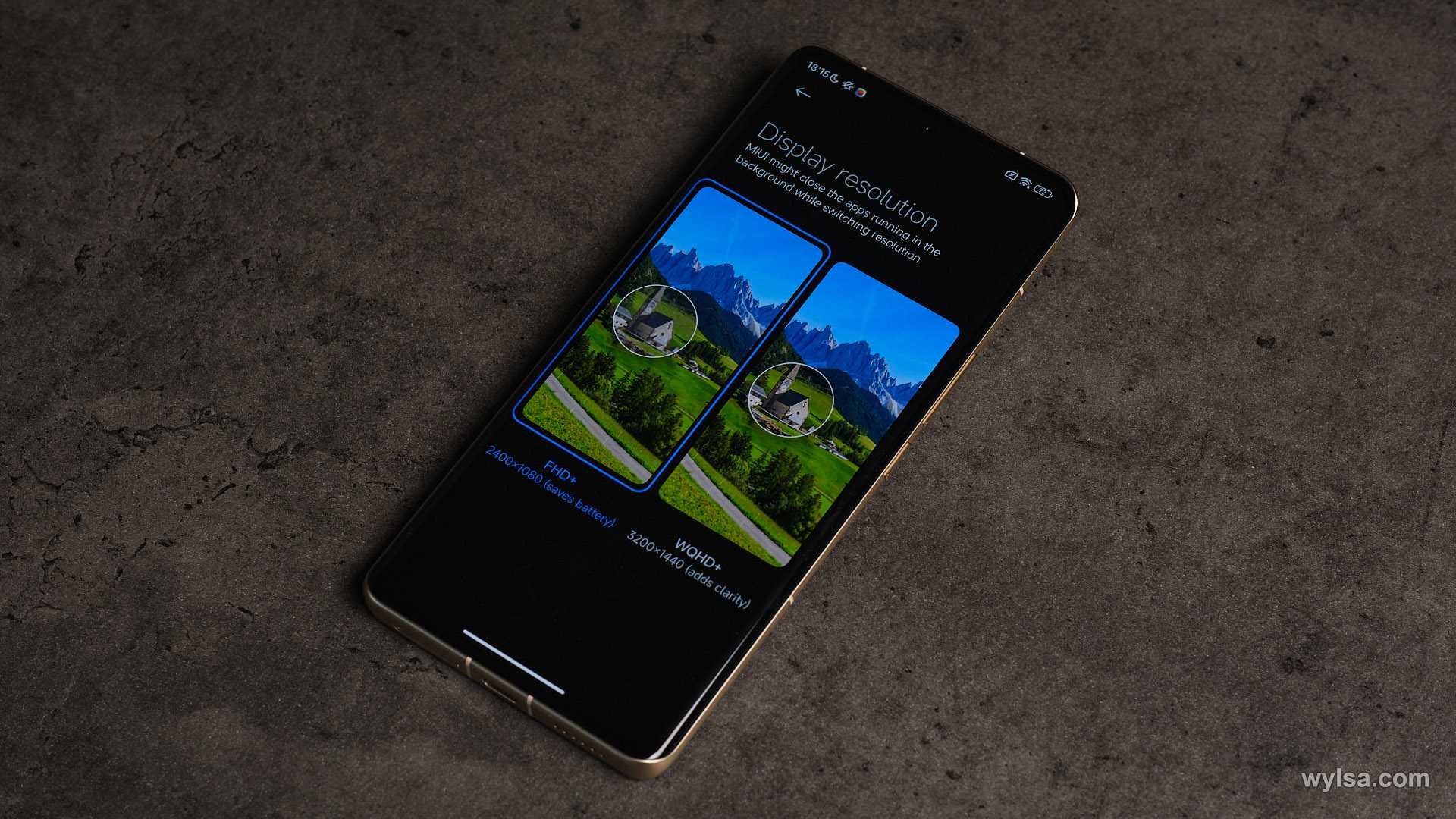
Цвета насыщенные, радуют глаза. В общем, картинка приятная. Был бы дисплей плоский, а яркости побольше, то был бы самый настоящий топ.






























